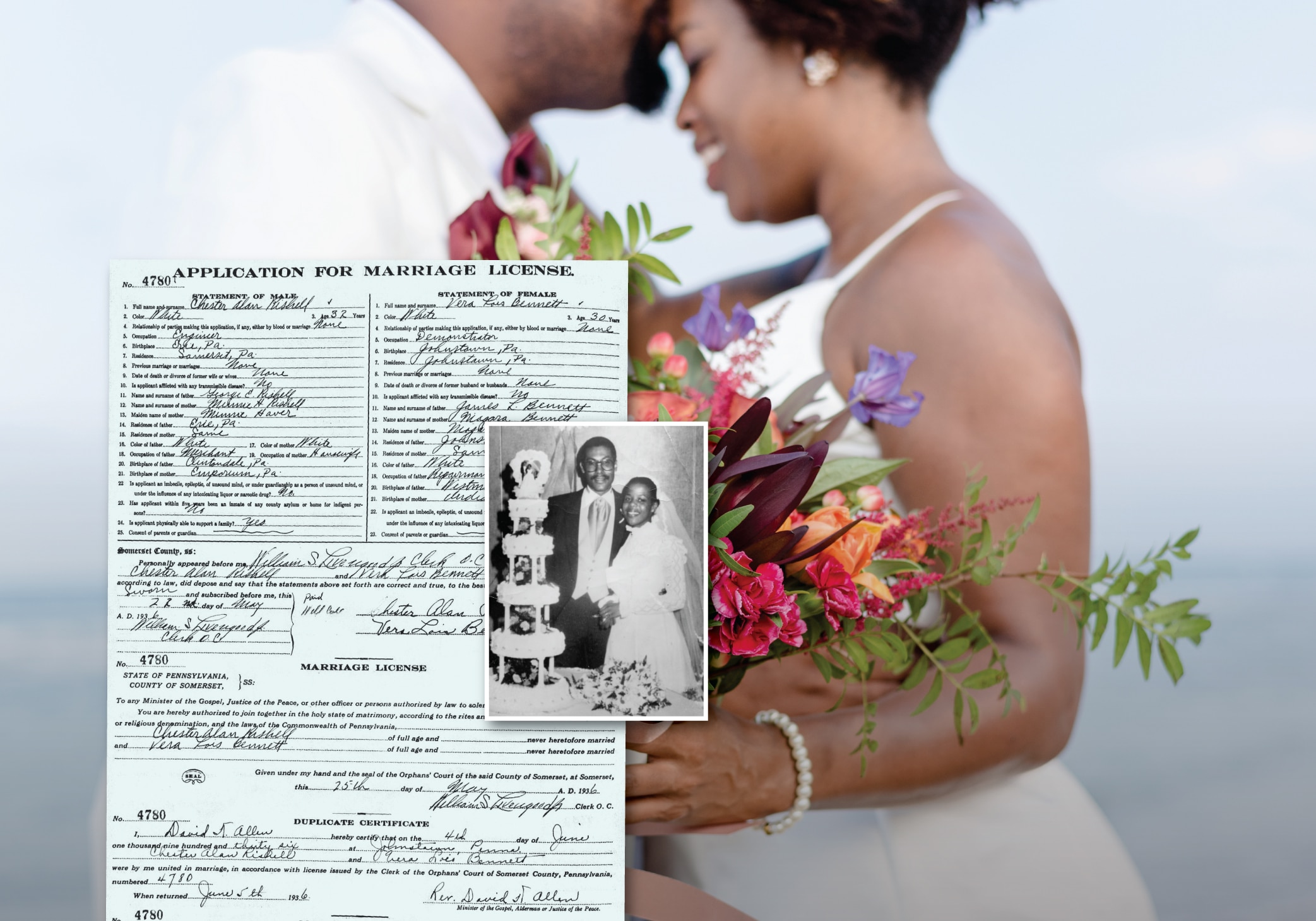Ancestry® Family History
Marriage Licenses
A couple who plans to wed in the United States applies for a marriage license before their ceremony. It certifies the couple's legal right to marry, ensuring that both partners are of legal age and unmarried. At the wedding itself, they sign a marriage certificate to make things official. The marriage license is among many types of marriage records, but it's one of the most common and is a valuable resource for anyone researching their family history.

What You Can Learn from a Marriage License
The information found on marriage licenses is best understood in the context of their history. Marriage licenses are a relatively new invention, dating only to the 19th century. Previously, marriage was a private affair, an agreement between families that didn't require government approval. Couples didn't even need to marry in a church.
States started requiring a license and certificate because marriages have legal ramifications, affecting property, inheritance, and taxes. Couples needed to prove they were unmarried and of marriageable age (usually over 18), sharing some key details to get the go-ahead to wed. And in the 1930s, several U.S. states passed “gin marriage” laws, in response to Prohibition-era worries that people would enter into hasty marriages while under the influence of alcohol. They required couples to wait several days between receiving their license to wed and getting married.
Most marriage licenses include the groom's name, the bride's maiden name, the date and place the license was issued, and the marriage location. Many have the proposed marriage date as well.
But the information you get on a marriage license can vary by state and time frame. This Pennsylvania marriage license from the 1930s, for instance, included each person's age, birthplace, residence, and occupation. It also asked for the same details from both sets of parents, including the mother's maiden name.
This information can help you explore your family history. The bride's maiden name will help you learn about her side of the family and can lead you to resources like a birth record. Since some couples married young, the location of the license or marriage could be their hometown, and it can help you find other vital records.
Tips for Looking Up Marriage Licenses on Ancestry®
Ancestry® has a vast database of marriage records from around the world. These pointers will help you narrow your marriage license search.
You can estimate the marriage year.
If you don't know what year your family members married, it’s okay to estimate. If you know a little bit more information about them, like the age of their first child, you can use that to focus your search: Start your search that year or the year before and work backwards.
Check local newspapers for marriage announcements.
These announcements tend to include the wedding date and location, as well as the names of the bride and groom's parents. Also look for anniversary announcements. A 25th or 50th anniversary article can give you leads for finding the date and location of the marriage.
Search for marriage licenses by location.
If you’re not completely certain where the marriage took place, you can make an educated guess based on the first child's birthplace or an address listed in other records like U.S. Census records or city directories.
If you can't find a civil marriage license, investigate church records.
Churches kept marriage records for generations before civil records existed. The Boston Archdiocese, for instance, has marriage records that go back to 1789. But even if you’re looking for marriage records in more modern times, you still might want to look into church records. This is because when civil registrations began, some people didn't comply immediately, but they still held a religious ceremony.
Compare the bride's surname to her father's.
If the bride and her father have different last names, it’s an indication that it might have been her second marriage. Some marriage licenses ask if the bride and groom have been married before, but many don't.
Search specific collections of marriage licenses.
Local archives often bundled all the marriage record types together. But some break them down by category, like the South Carolina, Chesterfield County, Original Marriage licenses collection on Ancestry, which focuses on marriage licenses for that county from 1911 to 1951.
Go beyond the marriage license.
The information on a marriage license is just part of your family history. The Ancestry record collection can help you discover more important details about your relatives. A search of city directories may turn up where the newlyweds lived. Census records could reveal how many kids they had. Obituaries might describe your family members’ hobbies or accomplishments. It's all part of your unique family story.
Get Started on Your Journey of Discovery
There’s so much to learn about your family story. A search for a marriage license in our vast collection of marriage records is one place to start. Explore marriage records on Ancestry today.